Simon J. Julier
Matrix-Valued Measures and Wishart Statistics for Target Tracking Applications
Jun 02, 2024Abstract:Ensuring sufficiently accurate models is crucial in target tracking systems. If the assumed models deviate too much from the truth, the tracking performance might be severely degraded. While the models are in general defined using multivariate conditions, the measures used to validate them are most often scalar-valued. In this paper, we propose matrix-valued measures for both offline and online assessment of target tracking systems. Recent results from Wishart statistics, and approximations thereof, are adapted and it is shown how these can be incorporated to infer statistical properties for the eigenvalues of the proposed measures. In addition, we relate these results to the statistics of the baseline measures. Finally, the applicability of the proposed measures are demonstrated using two important problems in target tracking: (i) distributed track fusion design; and (ii) filter model mismatch detection.
Gradient-Based Interpretability Methods and Binarized Neural Networks
Jun 23, 2021


Abstract:Binarized Neural Networks (BNNs) have the potential to revolutionize the way that deep learning is carried out in edge computing platforms. However, the effectiveness of interpretability methods on these networks has not been assessed. In this paper, we compare the performance of several widely used saliency map-based interpretabilty techniques (Gradient, SmoothGrad and GradCAM), when applied to Binarized or Full Precision Neural Networks (FPNNs). We found that the basic Gradient method produces very similar-looking maps for both types of network. However, SmoothGrad produces significantly noisier maps for BNNs. GradCAM also produces saliency maps which differ between network types, with some of the BNNs having seemingly nonsensical explanations. We comment on possible reasons for these differences in explanations and present it as an example of why interpretability techniques should be tested on a wider range of network types.
Instant Automated Inference of Perceived Mental Stress through Smartphone PPG and Thermal Imaging
Dec 21, 2018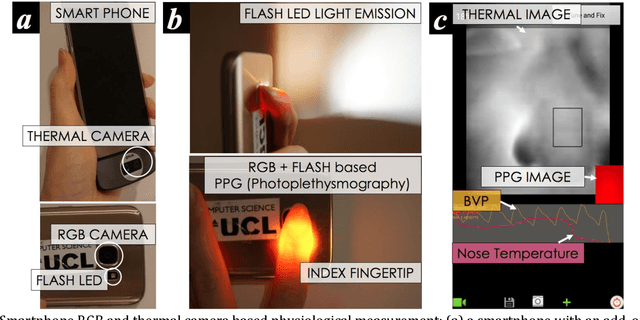
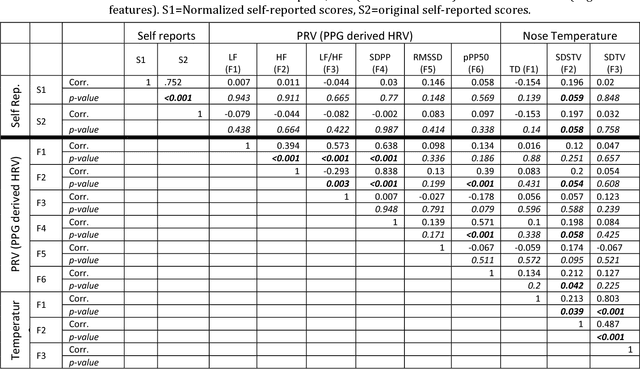
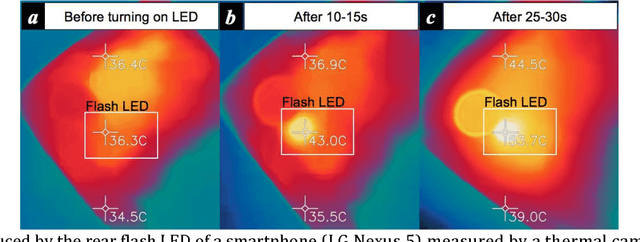

Abstract:Background: A smartphone is a promising tool for daily cardiovascular measurement and mental stress monitoring. A smartphone camera-based PhotoPlethysmoGraphy (PPG) and a low-cost thermal camera can be used to create cheap, convenient and mobile monitoring systems. However, to ensure reliable monitoring results, a person has to remain still for several minutes while a measurement is being taken. This is very cumbersome and makes its use in real-life mobile situations quite impractical. Objective: We propose a system which combines PPG and thermography with the aim of improving cardiovascular signal quality and capturing stress responses quickly. Methods: Using a smartphone camera with a low cost thermal camera added on, we built a novel system which continuously and reliably measures two different types of cardiovascular events: i) blood volume pulse and ii) vasoconstriction/dilation-induced temperature changes of the nose tip. 17 healthy participants, involved in a series of stress-inducing mental workload tasks, measured their physiological responses to stressors over a short window of time (20 seconds) immediately after each task. Participants reported their level of perceived mental stress using a 10-cm Visual Analogue Scale (VAS). We used normalized K-means clustering to reduce interpersonal differences in the self-reported ratings. For the instant stress inference task, we built novel low-level feature sets representing variability of cardiovascular patterns. We then used the automatic feature learning capability of artificial Neural Networks (NN) to improve the mapping between the extracted set of features and the self-reported ratings. We compared our proposed method with existing hand-engineered features-based machine learning methods. Results, Conclusions: ... due to limited space here, we refer to our manuscript.
Deep Thermal Imaging: Proximate Material Type Recognition in the Wild through Deep Learning of Spatial Surface Temperature Patterns
Mar 06, 2018



Abstract:We introduce Deep Thermal Imaging, a new approach for close-range automatic recognition of materials to enhance the understanding of people and ubiquitous technologies of their proximal environment. Our approach uses a low-cost mobile thermal camera integrated into a smartphone to capture thermal textures. A deep neural network classifies these textures into material types. This approach works effectively without the need for ambient light sources or direct contact with materials. Furthermore, the use of a deep learning network removes the need to handcraft the set of features for different materials. We evaluated the performance of the system by training it to recognise 32 material types in both indoor and outdoor environments. Our approach produced recognition accuracies above 98% in 14,860 images of 15 indoor materials and above 89% in 26,584 images of 17 outdoor materials. We conclude by discussing its potentials for real-time use in HCI applications and future directions.
Robust tracking of respiratory rate in high-dynamic range scenes using mobile thermal imaging
Sep 20, 2017



Abstract:The ability to monitor respiratory rate is extremely important for medical treatment, healthcare and fitness sectors. In many situations, mobile methods, which allow users to undertake every day activities, are required. However, current monitoring systems can be obtrusive, requiring users to wear respiration belts or nasal probes. Recent advances in thermographic systems have shrunk their size, weight and cost, to the point where it is possible to create smart-phone based respiration rate monitoring devices that are not affected by lighting conditions. However, mobile thermal imaging is challenged in scenes with high thermal dynamic ranges. This challenge is further amplified by general problems such as motion artifacts and low spatial resolution, leading to unreliable breathing signals. In this paper, we propose a novel and robust approach for respiration tracking which compensates for the negative effects of variations in the ambient temperature and motion artifacts and can accurately extract breathing rates in highly dynamic thermal scenes. It has three main contributions. The first is a novel Optimal Quantization technique which adaptively constructs a color mapping of absolute temperature to improve segmentation, classification and tracking. The second is the Thermal Gradient Flow method that computes thermal gradient magnitude maps to enhance accuracy of the nostril region tracking. Finally, we introduce the Thermal Voxel method to increase the reliability of the captured respiration signals compared to the traditional averaging method. We demonstrate the extreme robustness of our system to track the nostril-region and measure the respiratory rate in high dynamic range scenes.
* Vol. 8, No. 10, 1 Oct 2017, Biomedical Optics Express 4480 - Full abstract can be found in this journal article (due to limited word counts of 'arXiv abstract')
DeepBreath: Deep Learning of Breathing Patterns for Automatic Stress Recognition using Low-Cost Thermal Imaging in Unconstrained Settings
Aug 20, 2017



Abstract:We propose DeepBreath, a deep learning model which automatically recognises people's psychological stress level (mental overload) from their breathing patterns. Using a low cost thermal camera, we track a person's breathing patterns as temperature changes around his/her nostril. The paper's technical contribution is threefold. First of all, instead of creating hand-crafted features to capture aspects of the breathing patterns, we transform the uni-dimensional breathing signals into two dimensional respiration variability spectrogram (RVS) sequences. The spectrograms easily capture the complexity of the breathing dynamics. Second, a spatial pattern analysis based on a deep Convolutional Neural Network (CNN) is directly applied to the spectrogram sequences without the need of hand-crafting features. Finally, a data augmentation technique, inspired from solutions for over-fitting problems in deep learning, is applied to allow the CNN to learn with a small-scale dataset from short-term measurements (e.g., up to a few hours). The model is trained and tested with data collected from people exposed to two types of cognitive tasks (Stroop Colour Word Test, Mental Computation test) with sessions of different difficulty levels. Using normalised self-report as ground truth, the CNN reaches 84.59% accuracy in discriminating between two levels of stress and 56.52% in discriminating between three levels. In addition, the CNN outperformed powerful shallow learning methods based on a single layer neural network. Finally, the dataset of labelled thermal images will be open to the community.
Unscented Orientation Estimation Based on the Bingham Distribution
Nov 22, 2013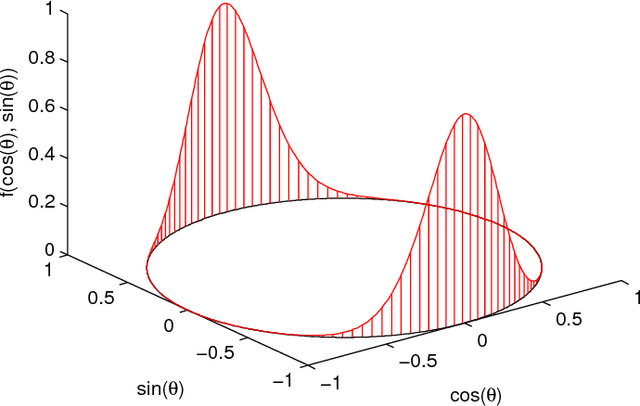

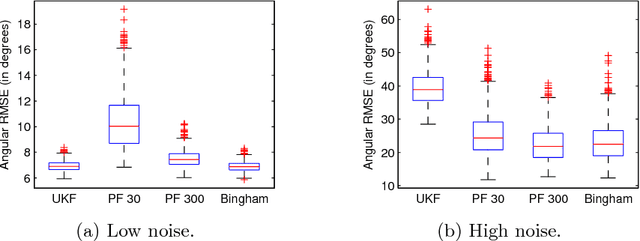
Abstract:Orientation estimation for 3D objects is a common problem that is usually tackled with traditional nonlinear filtering techniques such as the extended Kalman filter (EKF) or the unscented Kalman filter (UKF). Most of these techniques assume Gaussian distributions to account for system noise and uncertain measurements. This distributional assumption does not consider the periodic nature of pose and orientation uncertainty. We propose a filter that considers the periodicity of the orientation estimation problem in its distributional assumption. This is achieved by making use of the Bingham distribution, which is defined on the hypersphere and thus inherently more suitable to periodic problems. Furthermore, handling of non-trivial system functions is done using deterministic sampling in an efficient way. A deterministic sampling scheme reminiscent of the UKF is proposed for the nonlinear manifold of orientations. It is the first deterministic sampling scheme that truly reflects the nonlinear manifold of the orientation.
 Add to Chrome
Add to Chrome Add to Firefox
Add to Firefox Add to Edge
Add to Edge